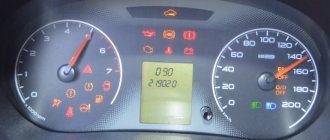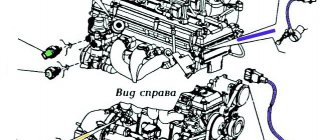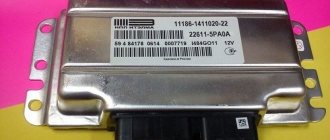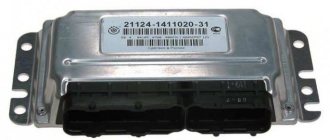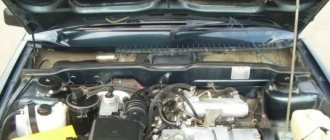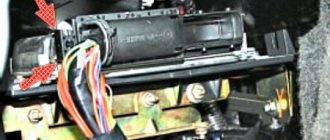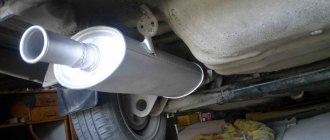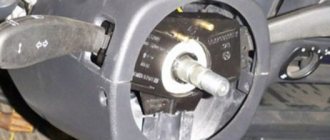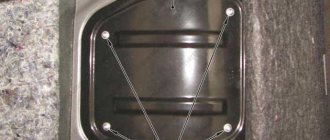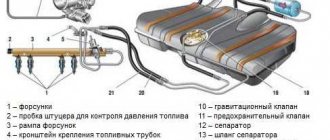October 12, 2015 Lada.Online 271 573 21
Various sensors are responsible for the operation of all systems of a modern car. They take readings and transmit them to the electronic engine control unit (ECU). If the sensor malfunctions, an error is stored in the memory, and in some cases a Check Engine error appears on the instrument panel.
Injection system
Nowadays, cars have become more advanced and technologically advanced. The control process from a carburetor engine switched to an injection engine. A car engine injector is much more reliable than a carburetor.
The injection system will allow you to more correctly control the car engine, which allows you to use fuel more economically. Modern cars are equipped only with injection engines, since using a carburetor engine is not advisable.
The injection system uses a large number of different sensors that send signals to the electronic engine control unit. Since the injection system uses a large number of sensors, they often fail. This is due to aging or improper operation of the car.
In this article we will talk about all the sensors installed on Lada cars, what role they play and what they are needed for.
Fuses and relays Lada Granta (VAZ 2190), 2011 - 2022
Most of the power supply circuits of the electrical equipment of the domestic sedan and liftback are protected by fuses. Powerful current consumers are connected via relays. The protective elements are installed in mounting blocks, which are located in the engine compartment and interior.
The diagrams of Lada Granta (2190, 2191) 2011, 2012, 2013, 2014, 2015, 2022, 2017, 2022 model years are considered.
In the engine compartment
To access the fuses located in the engine compartment block, lift the cover and remove it from the mounting block.
In the cabin
For access to the protective elements of the mounting block in the vehicle interior. Pull and remove the cover against the resistance of the latches. There is a current location diagram on the inside of the cover.
General form. DELRHI
Mass air flow sensor
The mass air flow sensor, also known as mass air flow sensor, is installed on all fuel-injected Lada and VAZ cars. The sensor is located between the intake receiver bellows and the air filter box. This sensor is involved in the process of forming the fuel-air mixture. It also estimates the amount of intake air, taking into account its temperature. If there is a malfunction, the “CheckEngine” light does not always light up.
Signs of sensor malfunction:
- Loss of vehicle dynamics;
- Unstable idle;
- Jerking when moving;
- Difficulty starting the engine;
- High fuel consumption;
Speed sensor
The speed sensor is installed on the gearbox housing and is designed to measure the speed of the vehicle and calculate the kilometers traveled. The speed sensor also provides readings for preparing the air-fuel mixture while the car is moving. You can notice that when the car is rolling at neutral speed, the idle speed is slightly higher than when the car is stationary. When there is a malfunction, the “CheckEngine” light almost always comes on.
Signs of sensor malfunction:
- There are no increased speeds when driving at neutral speed;
- Speedometer does not show speed;
- The odometer does not work;
- EUR does not work;
Repairing fan and radiator
Often the heater regulator on a Priora does not work due to the fact that a large amount of dust or other small dirt particles has entered the heat exchanger. Over time, contaminants get inside heating devices. This cannot but affect the performance of the entire system. Air masses do not warm up well. You may note that the oven only works in position 4. In case of contamination, you can simply replace the entire radiator. You need to remove the device from the power unit side. Do not forget to first drain the antifreeze from the cooling system, disconnect the windshield wipers and wires, dismantle the fan completely and remove the entire radiator by removing the pipes leading to it.
Coolant temperature sensor
Coolant temperature sensor, also known as DTOZH. Installed in the thermostat housing. Serves to prepare the air-fuel mixture when starting the engine. It also simultaneously displays coolant temperature readings on the car’s dashboard and turns on the engine cooling fan. If there is a malfunction, the “CheckEngine” light does not light up.
Signs of sensor malfunction:
- Loss of vehicle dynamics;
- Unstable idle;
- Jerking when moving;
- Difficulty starting the engine;
- High fuel consumption;
- Difficulty starting in the cold season;
Main set of sensors for 16-valve VAZ-2112 engines
The ECU must control many parameters at once. The most important information will be the position of the crankshaft. You can turn off all sensors except the DPKV, and this will not lead to the engine stopping.
Sensors connected to the ECU
Let's list all the elements one by one:
Let's take a look at how all the elements look in real life. Shown are pictures of VAZ-2112 sensors (16-valve internal combustion engine).
Each element will be easy to find under the hood
Everything said above is true for two engines at once - for units 21124 and 21120 (1.6 and 1.5 l).
You cannot unscrew the DTOZH sensor without draining the coolant. And to disconnect the sensor means to disconnect the connector, but not to dismantle the sensor itself.
Where is which sensor located - engine compartment diagram
Let's look at another picture.
Engine compartment and engine 21124
It is important to understand where the following elements are located:
The location of the phase sensor is indicated in the previous chapter.
Never unscrew the speed sensor. It will be difficult to install it in a way that maintains a seal.
Crankshaft position sensor
Crankshaft position sensor, also known as DPKV. Installed on a bracket near the generator belt drive pulley. Works on the law of electromagnetic induction. Reads readings from the crown of the generator drive pulley. Sets the ignition timing angle (IAF). If there is a malfunction, the “CheckEngine” light comes on.
Signs of malfunction:
- The engine runs intermittently;
- The engine does not start (no spark);
Articles
For oxygen sensors, the designation 21120-3850010 was first used. Then an article appeared with the numbers 1118 (see photo). It appears to be a new type of sensor. It will be easier to use BOSCH articles.
Exhaust system of VAZ-21120 engine
We list the article numbers of the remaining sensors:
The last three sensors are not connected to the ECU. However, a rough road sensor (2123-1413130) can be connected. It affects the operation of the engine, although it is attached to the body.
Engines with ECU January 4.1 do not have oxygen sensors.
In general, on VAZ-2112 hatchbacks, sensors may be different from those indicated in the list. But then we are talking about an 8-valve engine. And everything that we indicated applies to 16 valves, here is a diagram of this engine.
Phase sensor
The phase sensor is installed on an engine with 16 valves, located near the fuel rail. Based on the law of electromagnetic induction, it takes readings from the intake camshaft master pulley. Participates in the process of formation of the air-fuel mixture for each cylinder separately. In the event of a malfunction, the engine begins to operate in emergency mode. When there is a malfunction, the “CheckEngine” light almost always comes on.
Signs of malfunction:
- The engine runs intermittently;
- Increased fuel consumption;
- Unstable engine operation at idle;
Total
The factory fuel consumption figure for Priora with 16-valve engines is 6.6-6.9 liters per mixed “hundred”. In reality, the appetite ranges from 8 to 14 liters. in winter and 5.5-11 l. in summer.
Increased fuel consumption can be caused by malfunctions in the fuel system, in the ECM, a clogged air filter, a clogged catalyst, incorrect operation of the air purge valve, or air leaks. Tire pressure and driving style also determine energy consumption.
Sooner or later, the euphoria from the new car wears off, and the owner begins to pay more and more attention to the fuel level needle, comparing the manufacturer’s stated figures with the real state of affairs. The dependence of these values on tire pressure or problems with the ignition system is clear even to novice motorists. But this is not always the root cause of excessive fuel consumption; sometimes the sources of the problem have to be looked deeper.
Idle speed control
The idle speed regulator, also known as IAC, is installed in the throttle valve. Designed to regulate idle speed on engines without the E-GAS system. The sensor is quite unreliable and fails very often. It is a motor with a worm gear. If there is a malfunction, the “CheckEngine” light does not light up.
Signs of malfunction:
- Not smooth idle;
- The revolutions are floating;
- Troubles the engine;
Malfunctions and their elimination
One of the problems of APS Priora is the implementation of a data exchange mechanism between the immobilizer and the vehicle's ECM via a diagnostic line. In this case, malfunctions occur in the system - the immobilizer signal lights up on the instrument panel and the engine does not start.
The code in the immobilizer may go wrong:
- from connecting diagnostic equipment;
- from the appearance of induced currents from the cell phone transmitter,
- from voltage surges in the vehicle's on-board network.
- from zero charge in the battery.
In the latest Priora models, an emergency shutdown procedure for the anti-theft system has been implemented. It is necessary to activate this function and register a password in the ECU. Then, if an emergency situation occurs with the APS, you can, by manipulating the gas pedal according to the factory instructions, start the car, ignoring the immobilizer blocking.
Throttle Position Sensor
The throttle position sensor (TPS) is installed on the throttle valve on cars without the E-GAZ system. Designed to regulate engine speed. The sensor is not reliable and often fails. If there is a malfunction, the “CheckEngine” light does not always light up.
Signs of malfunction:
- Not smooth idle;
- The revolutions are floating;
- Troubles the engine;
- When starting the engine, the speed is increased;
- Spontaneous increase or decrease in speed;
Oil pressure sensor
The oil pressure sensor is installed in the cylinder head. Designed to indicate oil pressure and indicate oil pressure when the engine is running. A very reliable sensor that rarely fails. The “CheckEngine” light does not light up when there is a malfunction.
Signs of malfunction:
- The oil pressure light is constantly on;
- The oil pressure light does not light up when the ignition is turned on;
Oxygen sensor
The oxygen sensor is installed in the exhaust manifold of the car. Serves to monitor exhaust gases and adjust the air-fuel mixture. A reliable sensor rarely fails. If there is a malfunction, the “CheckEngine” light does not always light up.
Signs of sensor malfunction:
- Loss of vehicle dynamics;
- Unstable idle;
- Jerking when moving;
- Difficulty starting the engine;
- High fuel consumption;
- Black smoke when driving at high speeds;
Repairing a lambda on a Priora: how to fix it and features of proper cleaning
It makes no sense to repair an oxygen sensor if it has already served more than 100 thousand kilometers. Products rarely last such a period of time, and often problems with them arise already after a mileage of 50 thousand km. If the cause of the product malfunction is a weak response, you can try to repair it. The repair process involves cleaning the surface from carbon deposits. However, removing carbon deposits is not so easy, and such an operation cannot be carried out using a metal brush. The reason for this is the design of the product, since the outer surface contains a layer of platinum coating. Mechanical impact will entail its removal.
To clean the lambda, you can use a simple technique. To do this, you will need phosphoric acid, in which the sensor should be placed. The recommended holding time for the product in acid is 20-30 minutes. For best results, the outer part of the sensor should be removed. This is best done on a lathe. After cleaning in acid, the device should be dried. The cap is returned back by welding it with argon welding. In order not to remove the protective screen, you can make small holes in it and clean through them.
When returning the part back to its place, do not forget to treat the threaded part with graphite lubricant, which will prevent it from sticking to the catalyst body (exhaust manifold).
Knock sensor
The knock sensor is installed on the cylinder block under the intake receiver. Based on the principle of the piezo element. Engine detonation is measured and the air-fuel mixture is adjusted. Quite a reliable sensor. If there is a malfunction, “CheckEngine” does not light up.
Signs of sensor malfunction:
- Loss of vehicle dynamics;
- Unstable idle;
- Jerking when moving;
Air conditioner sensor
The air conditioning sensor is installed under the bumper next to the air temperature sensor. Designed to turn on the air conditioner or protect against turning on at low temperatures. Let us remind you that the air conditioning in Lada cars only works at outside air temperatures of +5 degrees. Reliable sensor, no breakdowns were detected.
Signs of malfunction:
- The air conditioner clutch does not engage;
Mechanical engineering keeps up with the times, so new sensors appear quite quickly in car engine control.
